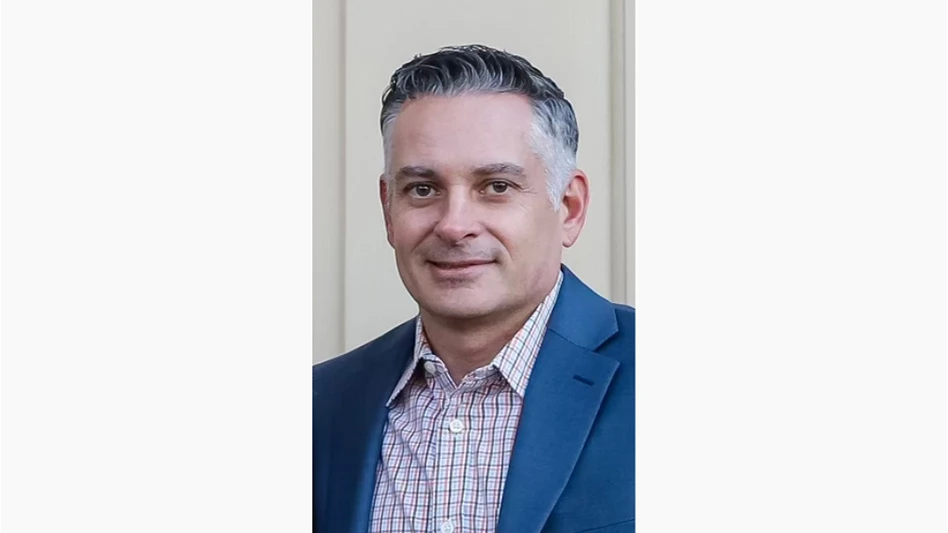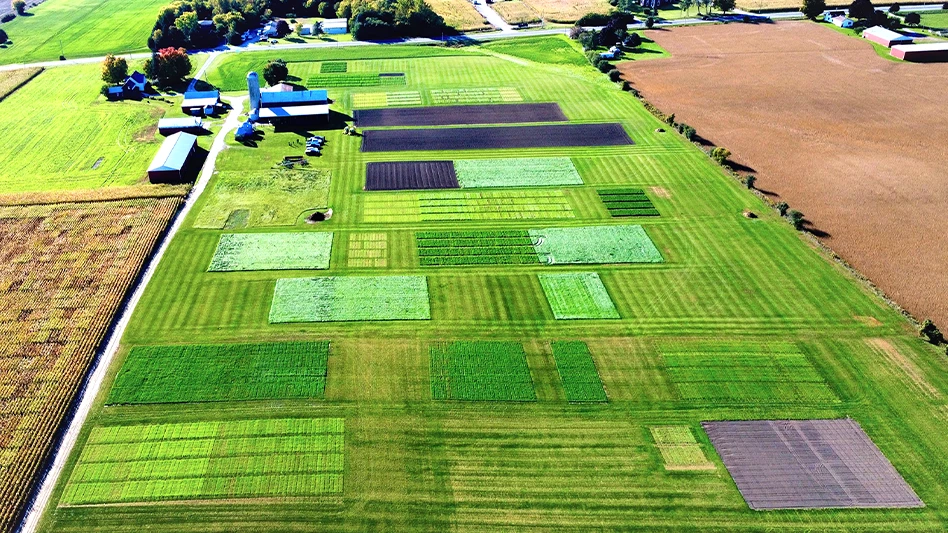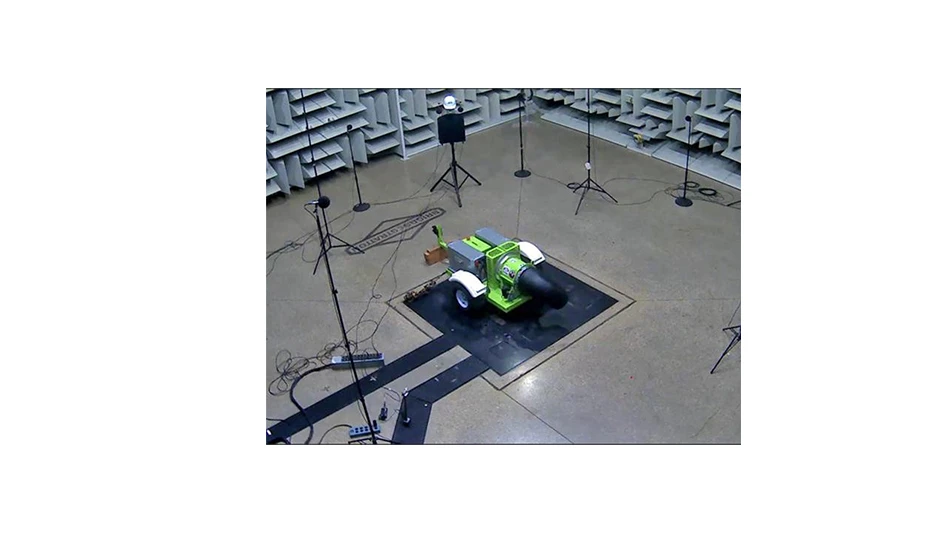

Watching the golden-orange sun rise over Lake Erie, there is a quiet anticipation for what comes next. With the approach of the 17th playing of the Solheim Cup at Inverness Club in Toledo, Ohio, the same emotion is palpable. Where players, members and staff have unwittingly conspired to make reverent golf history for more than a century, the rolling fairways are misted with whispers of glory. Leading the team in preparing these hallowed grounds are superintendent John Zimmers and his assistant superintendents, Ryan Kaczor and Carlton Henry.
“I’m ecstatic,” Henry says. “This is the best place to be in golf right now. Inverness has had a major renovation, women’s golf is booming and our society is getting back to normal. All these things are coming together. I couldn’t be more excited.”
The staff is highly motivated, and the countdown is on as the Solheim Cup will feature professional women golfers from the United States and Europe in the biennial team competition. Team practices will begin Aug. 31 and foursome and fourball matches will be played Sept. 4 and 5. Team USA needs 14½ points to win back the Cup from Europe, who won at Gleneagles in Scotland in 2019. The competition concludes Sept. 6 with 12 singles matches.

Event experience
No stranger to pressure, Zimmers has been doing special things since the start of his career. As a young superintendent, he helped oversee the construction and grow-in of Sand Ridge Golf Club in Chardon, Ohio. He moved to Oakmont Country Club near Pittsburgh in 1998 and over the course of 18 years, helped host the 2003 U.S. Amateur, the 2007 U.S. Open, the 2010 U.S. Women’s Open and, with Henry and Kaczor both on staff, the 2016 U.S. Open.
They all moved to Inverness in 2017 and their compatibility has fueled productivity. Starting with returning the course to its original Donald Ross design with architect Andrew Green and construction company McDonald & Sons, they next hosted the U.S. Junior Amateur in 2019, the LPGA Drive On Championship on short notice in 2020 and they’re finalizing preparations for the Solheim Cup.
Working with Zimmers, Kaczor says, “he truly cares about you and he’s as professional as anyone can be. If you give him 100 percent, he’s going to give you 200, 300 percent back. He has a passion for what he does and he goes above and beyond to make the course what it is. He accommodates the staff and truly supports people.” That loyalty is omnidirectional.
“We have been fortunate to retain our employees through the challenges of last year. Some of our summer help also returned,” Zimmers says. “Everyone is excited for the Solheim Cup and we have tried to create a really good working environment. That’s important. It’s very, very difficult to find help.” There are several women on staff who contribute greatly, and the team is working with a full contingent of agronomy volunteers, many of whom Zimmers has worked with before, providing another layer of proficiency.

“If there’s been one big challenge, it’s that 90 percent of the staff have never been part of an event this big,” Zimmers says. “As it’s happening, with the build out and temporary roads, the staff is like, ‘What are they doing?’ and I let them know what’s expected. I’m looking forward to the event. We are going to have a lot of people realize they were part of something rewarding and very, very special.”
Championship conditions are consistently enjoyed by members but there will be some changes to the course for the Solheim Cup. Working with the same team from the LPGA that worked on the Drive On Championship, a late addition to the revamped 2020 LPGA schedule, has been helpful and visiting with Team USA in mid-July helped fortify the details.
Everyone wants to see the ladies play No. 18, a signature hole. Think about Paul Azinger’s victory in the 1993 PGA Championship playoff, or Bob Tway’s win in the 1986 PGA, when he holed out from the bunker. With match play, the players don’t always reach No. 18, so Nos. 9 and 18 will be switched, a clever shift.
The first and 10th tees will also be combined, where there is normally a small warm-up putting green between them. The entire tee will be wrapped in stands and there will be outstanding views for this raucous area to start the front and back nines, where fans will also be able to view No. 9’s green complex (which is usually No. 18). Lots of action, lots of cheering.

As the event is held in late summer, it’s essential to keep the turf as healthy as possible through July and August and applications are being adjusted accordingly. Getting areas outside the ropes back to normal after the event will require some places to be reseeded and a full season of growth, meaning the entire property won’t fully return to normal until spring 2022.
The Solheim Cup is also different in that the crowds, expected to be around 20,000 people daily, will be concentrated on a few holes as opposed to being distributed throughout the course. There is a plan in place for foot traffic and the entire event will be a source of pride for the players, members and staff of Inverness.
Players and pride
The Meijer Pavilion will be centrally located and is one of the largest structures created at a women’s golf event. There will be live music daily and it will have open-air and climate-controlled seating. In 2019 Inverness installed “microfiber underground throughout the course, so there are countless areas to hook up to. That’s something pretty unique and all the tents are going to have livestream TV in them, Henry says.

The staff appreciates advancements in technology, like electric drive mowers that eliminate a lot of hydraulics on course, some of the new insecticides and fungicides, lightweight mowers and new aerification equipment, but there is a focus on fundamentals — how you water, how you spray and more. The staff is trained in the basics and new technology supplements that.
Inverness has always been on the cutting edge of thoughtfulness and consideration. In 1920, Inverness opened its clubhouse to the players competing in the U.S. Open, which was unprecedented. Walter Hagen “passed the hat” to the players to collect for what became “Hagen’s Clock.” This grandfather clock, gratefully given, still chimes on the hour in the clubhouse entryway.
In 2020, the USGA Green Section celebrated its 100th anniversary and the turf maintenance facility was dedicated to E.J. Marshall, the Inverness green committee chairman who noticed brown patches and consulted with the USGA and the U.S. Department of Agriculture to revive the greens ahead of the 1920 U.S. Open. From this collaboration, the cooperative USGA Green Section was formed.
It was the Inverness members who chose to share their course and support the LPGA in its return to play in the midst of COVID-19 for the Drive On Championship. McDonald & Sons, Zimmers and his staff are also helping grow in 40 acres adjacent to Inverness for the Lake Erie chapter of First Tee, where Green designed a soccer field, driving range and short game area. Inverness contributes to the community and Toledo has rallied behind the Solheim Cup, adding a new interchange near the club to help with traffic, working on infrastructure projects and investing in the downtown for locals and golf fans alike.
“This is a top-100 club in the world and the people truly care and are supportive of you,” Kaczor says. The membership has expanded nationally and new guests are welcomed daily, and “members ask how you’re doing, how your family is doing and they appreciate our hard work,” Kaczor adds. While nothing is perfect, good relationships among employees, management and members make mutual goals — like being a world-class venue — achievable.
Zimmers, with all his experience, acknowledges that every event is different. It’s helpful to understand arrangements with vendors and volunteers, and procuring extra rental equipment, but he still gets nervous. “I have done enough to know the weather can really wreak havoc,” Zimmers says. “You can’t dwell on it but accounting for it makes us better prepared. You look at things and think, ‘That can be better.’ We really just want to do the best we possibly can to represent the club and make everybody proud.”
“The course is doing really well. The board and the membership get all the credit. They had to make some tough decisions and we are so busy. We made changes but preserved the history and we have had rave reviews.”
The ladies don’t tee off for a few more weeks but winning whispers prevail. Zimmers, Kaczor, Henry and the people at Inverness talk to and care for one another, the players and the community. It has been a steadfast resurgence. Cheering at the Solheim Cup is encouraged and the good news is, at Inverness, it’s about to be loud.


Explore the August 2021 Issue
Check out more from this issue and find your next story to read.
Latest from Golf Course Industry
- GCSAA announces Grassroots Ambassador Leadership Award recipients
- Reel Turf Techs: David Gummo
- PBI-Gordon promotes two to executive level
- VIDEO: A First Green morning
- Bloom Golf Partners adds HR expert
- Seeking sustainability in Vietnam
- Kerns featured in Envu root diseases webinar
- Toro continues support of National Mayor’s Challenge for Water Conservation





